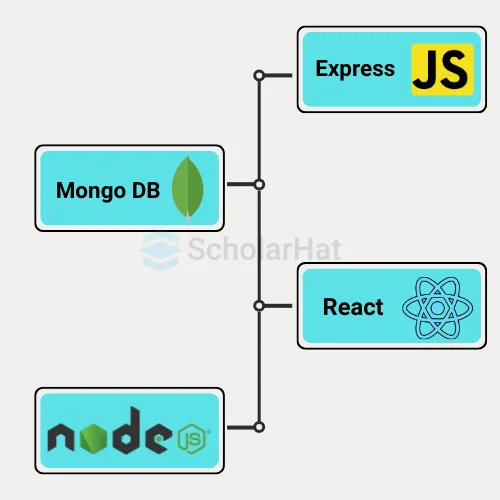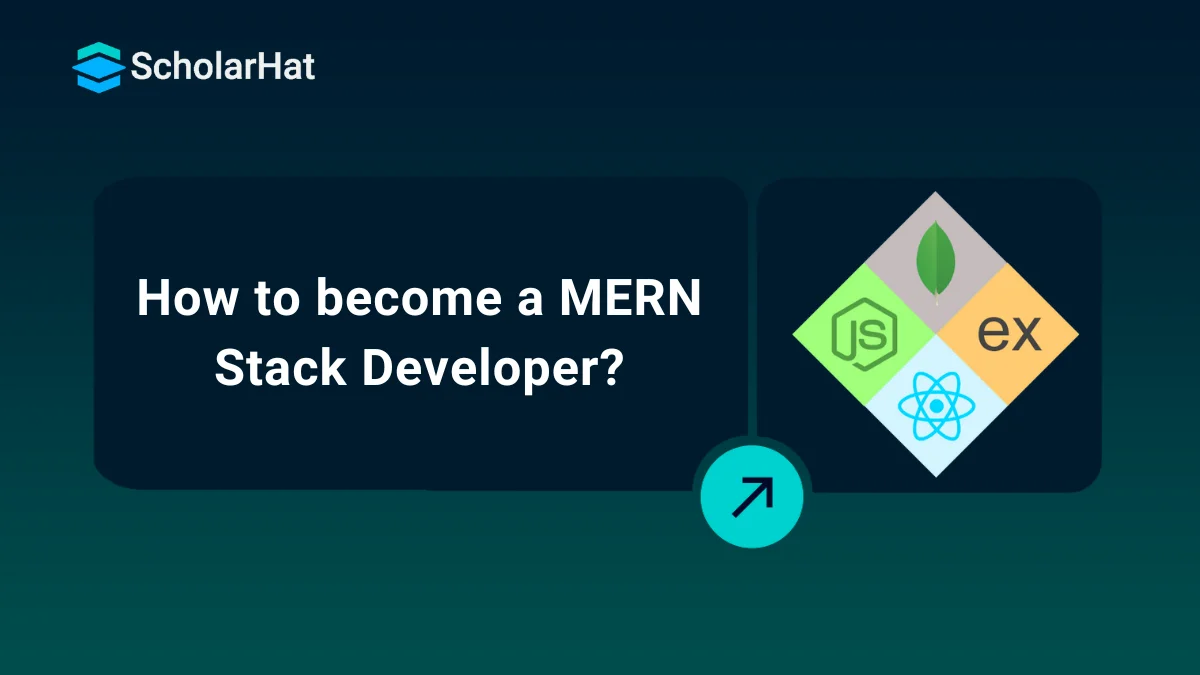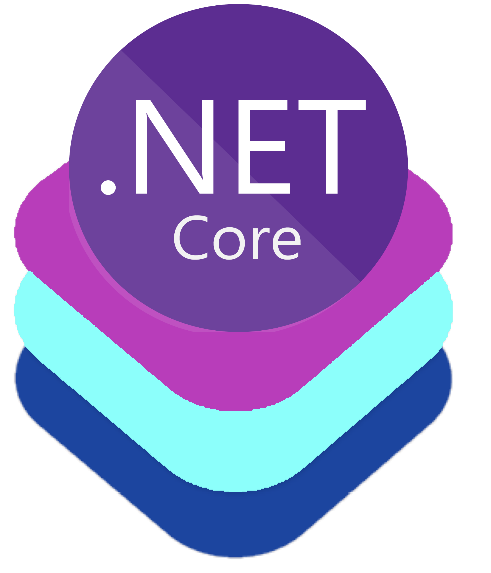MERN Stack Roadmap: Become a Full-Stack Developer in 2025
How to Become a MERN Stack Developer?: An Overview
The MERN stack is very popular because it allows developers to design a wide range of features and provide a comprehensive solution approach. The Mern Stack includes four important technologies in the software world:
Adoption of the Mern stack will accelerate in the coming years as developers use this technology to create engaging websites. MERN stack development would be a great option for anyone interested in entering this field. A bright future is predicted for his web developer at Mern Stack. In this Mern Stack tutorial, we will explore a guide to becoming a Mern Stack developer. Reading this entire post will give you valuable insights.
Why Learn Mern Stack?
1.) Full-Stack Development with JavaScript: JavaScript is a versatile language that can handle both front-end (user interface) and back-end (server-side logic) development. MERN leverages this, allowing you to focus on one language, reducing learning time and cost compared to mastering separate languages for each layer.
2.) Faster Development and Lower Costs: MERN's emphasis on JavaScript simplifies development, leading to faster project completion and potentially lower development costs.
3.) Beyond Web Apps: The MERN stack's core technologies (JavaScript and React) can be used to build more than just web applications. You can create desktop programs and mobile apps using frameworks like React Native, expanding your development possibilities.
4.) Complete Development Toolkit: MERN provides all the necessary tools to build full-fledged applications. MongoDB, a document-oriented database, uses JSON (JavaScript Object Notation) for data storage and retrieval. This format is widely used for data exchange between client and server, making data handling seamless.
5.) Structured and Scalable Architecture: MERN follows the Model-View-Controller (MVC) architecture, ensuring code organization and maintainability. MongoDB offers horizontal scalability by adding more servers, while React components are easily reusable and can be infinitely expanded.
6.) High Demand and Career Growth: The MERN stack's popularity translates to a strong job market with ample resources and learning materials available online. Mastering MERN can unlock a rewarding career path in full-stack development
Technologies to be learned for Mern Stack Developers

1. MongoDB
MongoDB stores data as JSON-like documents. Mongoose ORM (Object-Relational Mapping) allows easy integration with Node.js, making it a popular choice for MERN stack web development.
2. ExpressJS
Express is a lightweight framework that enables web application development. This allows you to handle only HTTP requests and responses, and manage sessions and authentication with some middleware modules.
3. ReactJS
React is a well-known library written in Javascript for building the front end of applications. Additionally, programmers can build reusable elements. Manage application state efficiently. Also, React supports server-side rendering, which allows developers to improve performance and increase the SEO of their applications.
4. NodeJS
Node.js is a JavaScript runtime environment that provides developers with a platform to run code written in JavaScript outside of the browser. Additionally, Node.js builds server-side applications on top of his MERN stack with many built-in modules for file I/O, networking, and security.
MERN Stack Developer Roadmap

1. Learn to use Development Tools
- Code Editors
- Visual Studio Code (VS Code): It is a lightweight and highly customizable code editor developed by Microsoft. It offers excellent support for JavaScript, Node.js, React.js, and MongoDB, along with a wide range of extensions to enhance productivity.
- Sublime Text: It is a fast and feature-rich code editor known for its speed and simplicity. It provides robust support for JavaScript and offers a wide range of plugins to extend its functionality for MERN stack development.
- Package Manager
A Package Manager lets you install, configure, update, and manage software packages, and product dependencies and also publish your packages.
Node Package Manager: It is the default package manager for JavaScript's runtime Node.js. NPM acts like a vast warehouse where you can find all sorts of necessary tools and materials (modules). It's a central place to get additional resources for building your web applications. NPM consists of two main parts:
- a CLI (command-line interface) tool for publishing and downloading packages
- an online repository that hosts JavaScript packages
- Webpack: It is a module bundler for JavaScript applications. It allows developers to bundle JavaScript modules, CSS files, images, and other assets into a single bundle for deployment.
- MongoDB Compass: It is a graphical user interface (GUI) tool for MongoDB that allows developers to interact with their MongoDB databases visually.
2. Learn JavaScript, HTML, and CSS
MERN Stack developer needs her three technology skills: HTML, CSS, and JavaScript to build a web project. Additionally, you must understand web development concepts and know how to run code using these programming languages. Developers can learn these concepts by watching free content available on Google or YouTube.
Now let's take a look at what role these technologies play in Mern stack development.
1. HTML(Hypertext Markup Language)
It is a scripting language that helps Mern stack developers design web page layouts. It guides the browser when displaying content on web pages. Additionally, learning HTML will allow the developer to add photos, lists, headings, and paragraphs to her website.
2. CSS(Cascading Styling Sheet )
It allows developers to style the layout of their pages and give them a more elegant and appealing look to attract users. Additionally, developers can use her CSS to style the text, icons, and photos appearing on HTML pages. CSS makes your website more responsive and interactive.
3. Javascript
Javascript allows Mern Stack developers to create more attractive and dynamic websites. Additionally, you can edit audio and video, change the colors of elements, and change the way your website behaves.
3. Learn React Concepts
React is a well-known and extensive front-end library, preferred by top IT companies around the world. You must be thorough with the following React concepts before moving to the development part:
- Components: The fundamental unit of React applications. Each component encapsulates a piece of UI with its logic and state, enabling modularity and reusability.
- JSX: A syntax extension to JavaScript that allows you to write HTML-like code within your JavaScript files.
- Props and State: Props in React are data passed from parent components to their children, dictating their behavior and appearance. The state in React manages the internal data of a component, allowing it to react to user interaction and update the UI.
- Component Lifecycle: React Lifecycle methods like render, componentDidMount, and componentWillUnmount provide hooks for performing specific tasks at different stages of the component's life.
- Conditional Rendering: Controlling what gets rendered based on certain conditions is essential for building dynamic and interactive UIs. React offers various conditional statements and techniques, like if statements and ternary operators, to achieve this.
- Handling Events: Understanding how to bind event listeners, handle user clicks, and manage input changes is crucial for building responsive and engaging experiences. React provides various event handlers and methods to achieve this.
- Forms and Inputs: React offers built-in components and APIs for managing input fields, handling form submissions, and validating user input.
Read More: React Developer Roadmap 2024
4. Understand the Backend with Express.Js and Node.Js
- Node.js: It is a JavaScript runtime environment with which developers can run JavaScript on the server side. This technology is essential for building server-side applications and APIs with the MERN stack.
- Node.js's non-blocking event-driven I/O: Understand how node.js I/O works and how asynchronous operations allow efficient handling of concurrent tasks. Explore the event loop and its role.
- Global Object: Explore global objects in Node.js(i.e. require, process, module, Class:Buffer etc)
- Node modules: Understand CommonJS and ES6 modules and their difference, how package managers like npm and yarn work, etc.
- Node.js File System (fs) module: Learn how to read and write files, create directories, and handle file-related tasks.
To start learning Node.js, you can install it on your computer and start by writing simple scripts.
Read More: Node.js Interview Questions and Answers
- Express: It is a framework for Node.js that simplifies the process of building web applications and APIs. It provides a set of tools and features that make it easier to handle HTTP requests, route requests to the appropriate controller, and manage middleware. You should learn core concepts like:
- Middleware: Middleware functions can perform tasks such as logging, authentication, parsing request bodies, and error handling.
- Routing: Routes are defined using methods like app.get(), app.post(), app.put(), app.delete(), etc.
- Request and Response Objects: The request object represents the HTTP request made by the client and the response object represents the HTTP response to be sent back to the client.
- Template Engines: Express.js provides built-in support for integrating template engines into your application.
To learn Express, you can start by creating a simple server and adding routes to handle HTTP requests. With time you can learn how to use middleware to handle cross-cutting concerns such as authentication and logging.
5. Storing data with MongoDB and Mongoose
- MongoDB
It is known for its document-oriented, cross-platform NoSQL capabilities, where each record represents a key-value pair. JavaScript Object Notation (JSON) objects combine multiple data types. Moreover, MongoDB is flexible and allows users to create tables, databases, themes, etc. MongoDB entities consist of information identified by meaningful keys.
Some important concepts you must learn are:
- Document: In MongoDB, data is stored in flexible, JSON-like documents. Each document represents a single record or entity in the database.
- Collection: A collection is a grouping of MongoDB documents.
- Document ID: Each document in MongoDB has a unique identifier called the document ID.
- Transactions: MongoDB supports multi-document transactions for operations that require atomicity, consistency, isolation, and durability (ACID properties).
- Index: MongoDB supports indexing to improve query performance. Indexes are data structures that store a sorted representation of the documents in a collection based on one or more fields.
Read More: MongoDB Interview Questions and Answers
- Mongoose: A MongoDB Object Modeling Tool
Mongoose is a library for Node.js that makes it easier to interact with MongoDB. It provides a straightforward, schema-based solution to model your application data.
6. Learn to use REST APIs
RESTful APIs are messengers for the front end and back end. They take requests from the frontend, fetch or update data in the backend, and then return responses. They use standard HTTP methods (GET, POST, PUT, DELETE) to perform CRUD (Create, Read, Update, Delete) operations on resources.
7. Version Control System
A version control system is a tool that helps both the backend and frontend developers collaborate and control the changes made over time. It also gives details about what kinds of changes should be made and by whom. Therefore, a version control system enhances the project speed by allowing developers to interact, remove the possibility of errors, and recover the code if any accident occurs.
Git is the most commonly used version control system (VCS) for MERN Stack Development. You can install Git on your local machine and create a new repository for your project.
8. Creating a Project
Once you have a basic understanding of MERN stack technology, you can start building a working application. This will help you understand them more deeply. You can also get project ideas from Google or implement your ideas. Additionally, creating your own projects will help you understand your skills and knowledge in more detail, and will help you showcase your skills to potential employers.
9. App Deployment and Hosting
After you have completed the application development, you need to deploy this so that others can visit it on the internet and use it. To deploy an application, you must learn the basics of hosting tools like AWS, Heroku, or Vercel based on your application’s needs. Configure servers to run NodeJS for the backend and serve ReactJS for the front end, ensuring scalability and performance.
10. Take an Internship
Internships are an amazing opportunity to gain real-world experience, learn new skills, and network with industry professionals. Through internships, you get to work on real projects and collaborate with experienced developers, explore different industries and technologies, gain valuable experience, expand your network, and increase your chances of success as a software developer.
11. Join the Community
Mern Stack developers need to connect with the developer community to receive proper guidance and support. However, there is also a huge online community of MERN Stack developers, including the MERN Stack Slack channel and his MERN Stack community on Reddit.
12. Get Certified
Earning a certification may improve your chances of getting hired or promoted.
ScholarHat offers you various certification courses to make your dream of becoming a front-end developer true.
- MERN: Full-Stack Web Developer Certification Training
- React JS Certification Training
- Frontend Foundations Certification Training
- Frontend Developer Certification Training
- MongoDB Course
- HTML & CSS Course
- Node.js Course
- JavaScript Programming Course
Role And Responsibilities of Mern Stack Developer:
The MERN Stack Developer has the following roles and responsibilities:
- Web Application Development and Maintenance: MERN stack developers must know how to build, deploy, and maintain web applications. Also, you should be able to design the backend of your application using Node.js and Express.js. An average developer should be able to implement MongoDB for storing the database and design the front end using React.js.
- Building and Running APIs: MERN stack developers must have expertise in building and running APIs that allow clients and servers to share data.
- Troubleshooting and Debugging: The developers must be able to identify and fix errors and bugs in web applications.
- Stay on top of the latest technology trends to stay competitive in the IT market. For a company to thrive in the digital world and succeed in the marketplace, it is essential to hire a dedicated MERN stack developer who can drive the business forward.
Job Description
The MERN stack is comprised of technologies that help you build applications faster. All technologies are based on her JS, making it easy for developers to learn her JS and create projects. If you have completed a great project and have extensive knowledge about MERN, you can apply for a company. But before that, it's important to understand the roles and responsibilities of a MERN stack developer.
Developing Projects
Project Idea Demonstrate your knowledge of MERN when starting a construction project. As a beginner, you should start with the basics and move on to more advanced projects. To create a project, select the IDE (e.g.Technology) with which you would like to work. Then create MERN (HTML, CSS, JavaScript) and publish it to GitHub.
Here are some interesting MERN projects you can try out:
- Social Media Applications
- Application Management
- E-Commerce Websites
- OTT Platforms
Future Scope of Mern Stack Developers
When we talk about web development, MERN is at the top. The MERN stack is powerful and in demand in web technologies. As a MERN Stack Developer, you'll always have a successful career ahead of you. All you need is a good knowledge of JavaScript. As long as you have good JavaScript skills and an eagerness to learn, your future at MERN is bright.
Read More:
- Top 10 Front-End Developer Skills You Need to Know
- Top 50 Frontend Interview Questions and Answers
- Front End Developer Salary in India
- Full Stack Developer Roadmap
Summary
Many IT companies choose to use MERN as part of their project's technology stack. So start learning the highly valuable technology stack MERN in the best possible way. Succeed professionally, expand your portfolio, and brighten your future with MERN! Feel free to give feedback on this article. Consider our new MERN: Full-Stack Web Developer Certification Training course to secure your career in Mern Stack.
| Download this PDF Now - MERN Stack Roadmap PDF By Scholarhat |
FAQs
Take our Fullstack skill challenge to evaluate yourself!

In less than 5 minutes, with our skill challenge, you can identify your knowledge gaps and strengths in a given skill.












